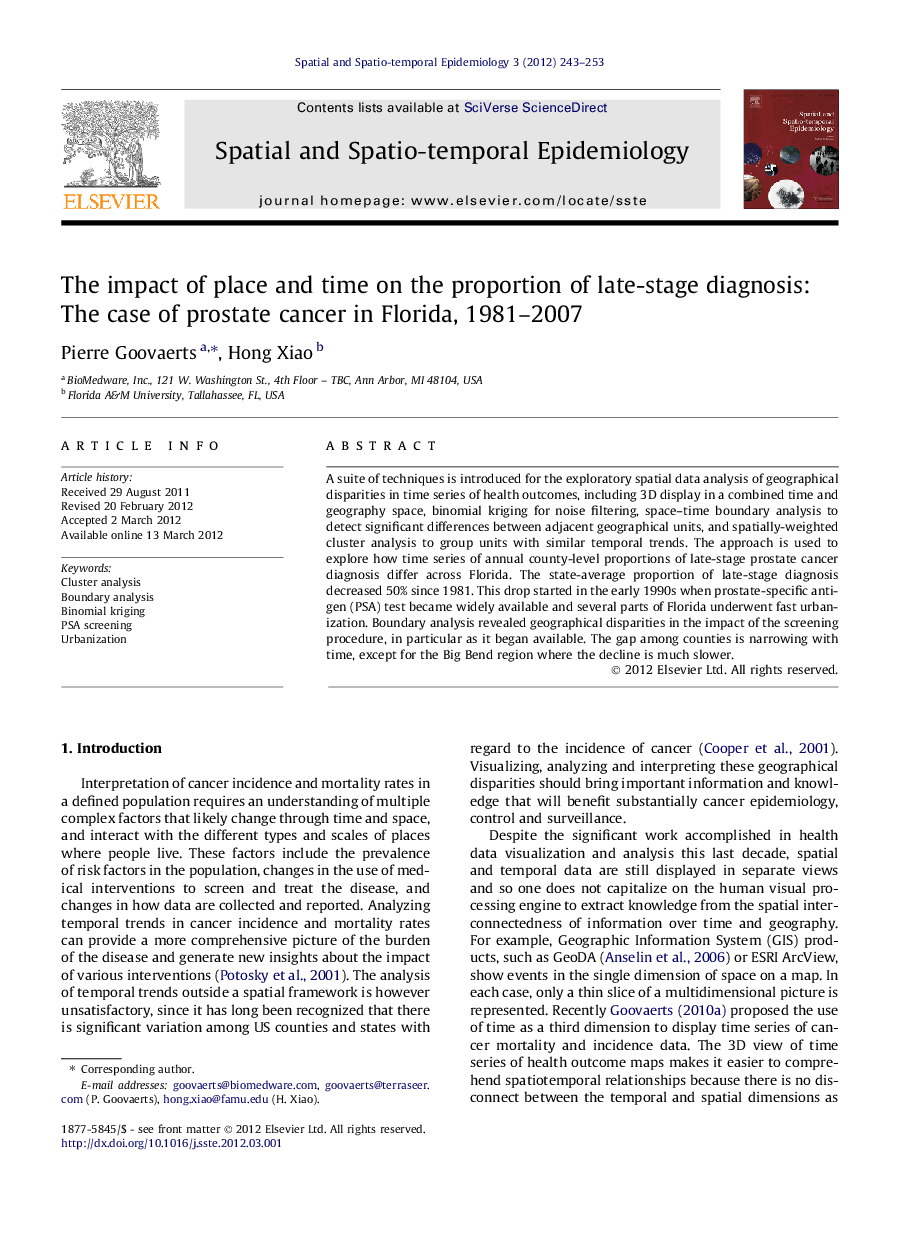| Article ID | Journal | Published Year | Pages | File Type |
|---|---|---|---|---|
| 1064425 | Spatial and Spatio-temporal Epidemiology | 2012 | 11 Pages |
A suite of techniques is introduced for the exploratory spatial data analysis of geographical disparities in time series of health outcomes, including 3D display in a combined time and geography space, binomial kriging for noise filtering, space–time boundary analysis to detect significant differences between adjacent geographical units, and spatially-weighted cluster analysis to group units with similar temporal trends. The approach is used to explore how time series of annual county-level proportions of late-stage prostate cancer diagnosis differ across Florida. The state-average proportion of late-stage diagnosis decreased 50% since 1981. This drop started in the early 1990s when prostate-specific antigen (PSA) test became widely available and several parts of Florida underwent fast urbanization. Boundary analysis revealed geographical disparities in the impact of the screening procedure, in particular as it began available. The gap among counties is narrowing with time, except for the Big Bend region where the decline is much slower.
► The state-average proportion of prostate cancer late-stage diagnosis was halved over the 26-year time period. ► Time trends in prostate cancer late-stage diagnosis vary greatly among Florida counties. ► Noise in cancer rate data can be filtered using binomial kriging. ► Geographical disparities were the most widespread when a new screening procedure was introduced in the early nineties. ► Spatially-weighted cluster analysis creates spatially compact groups of counties with similar temporal trends.
